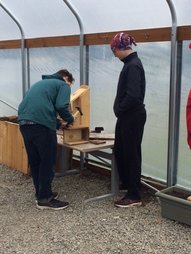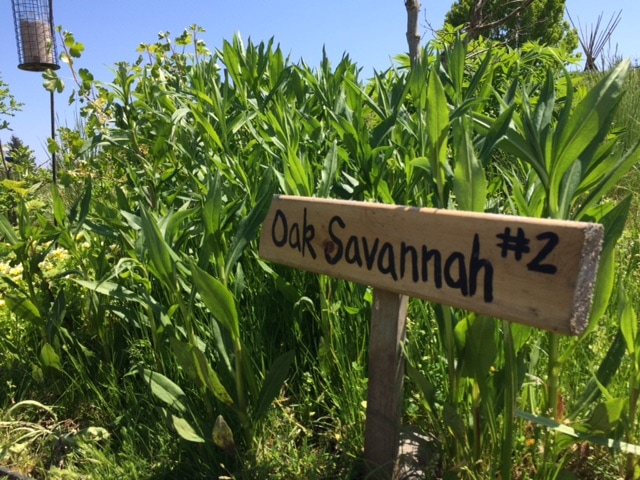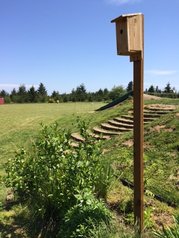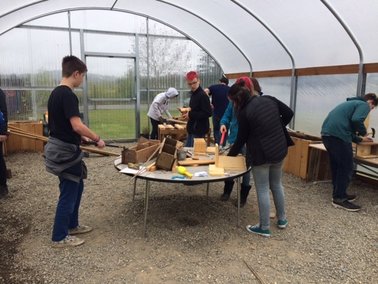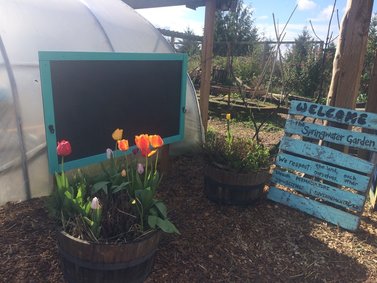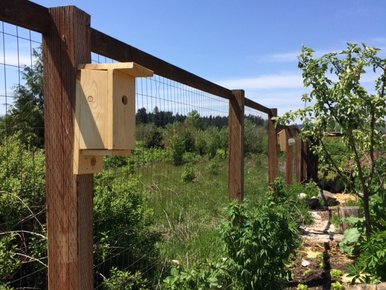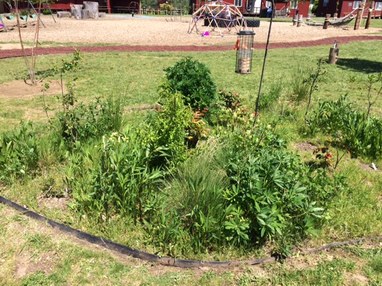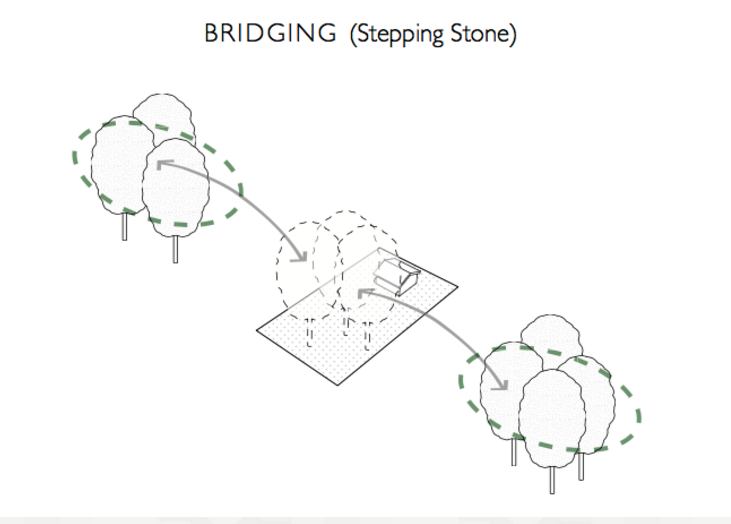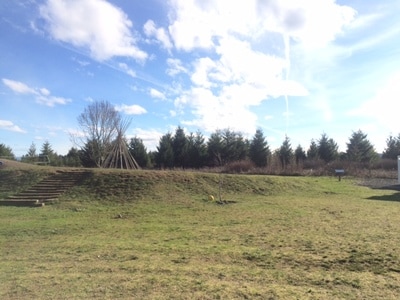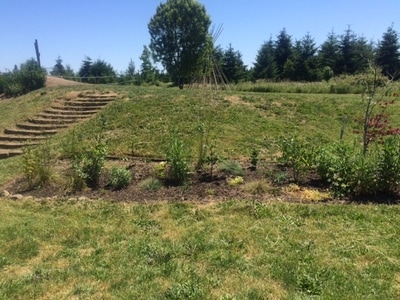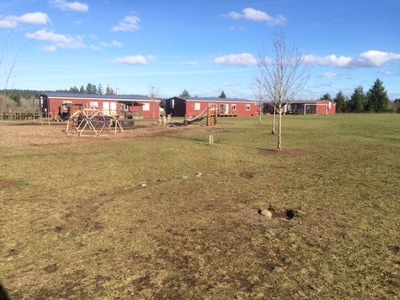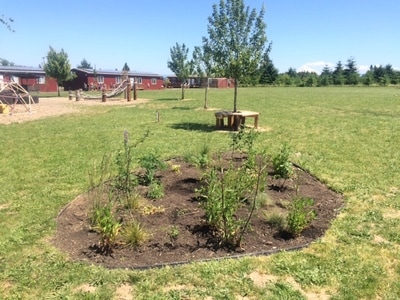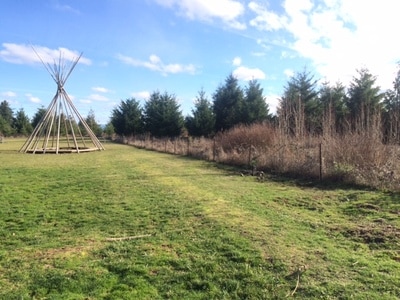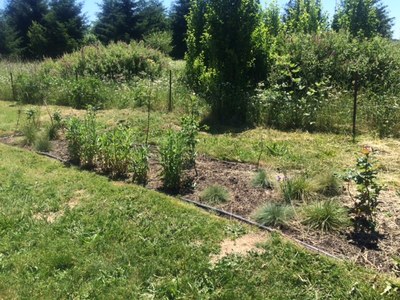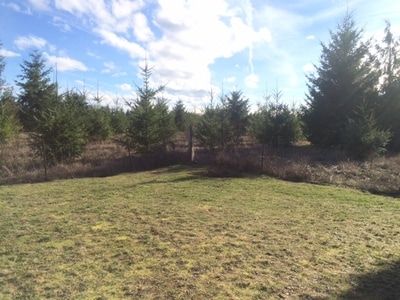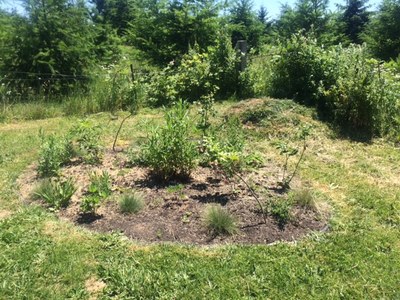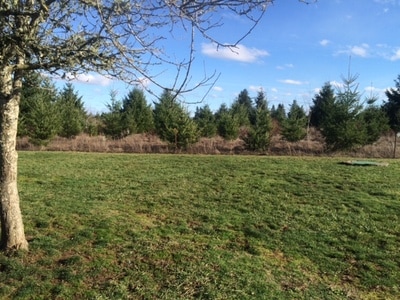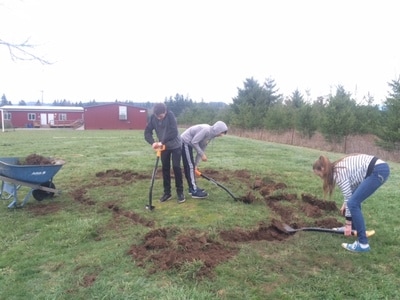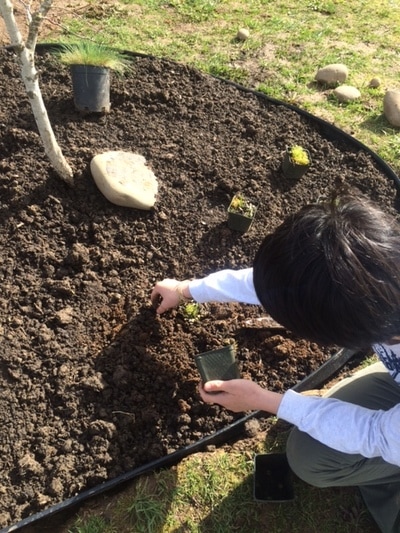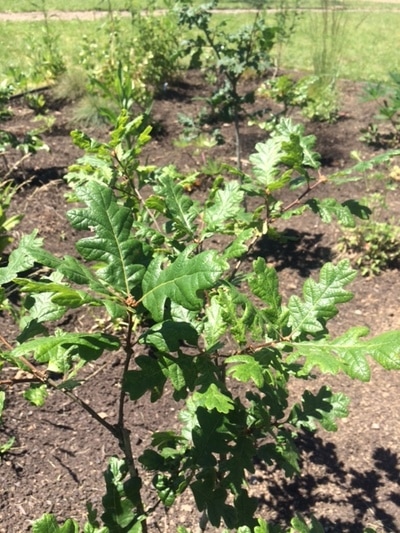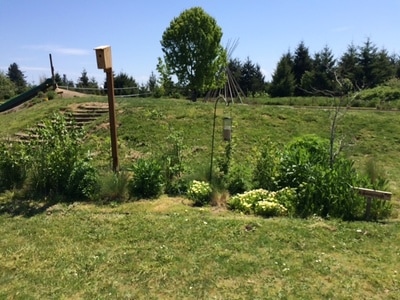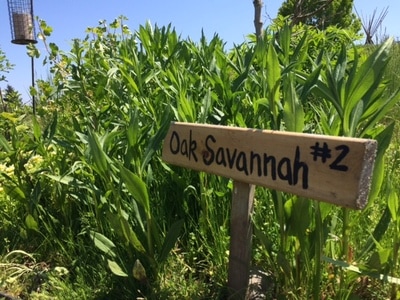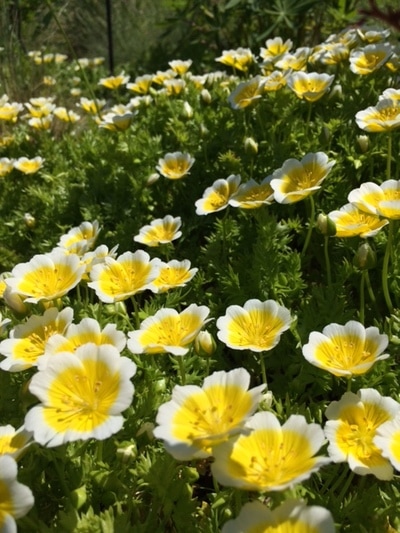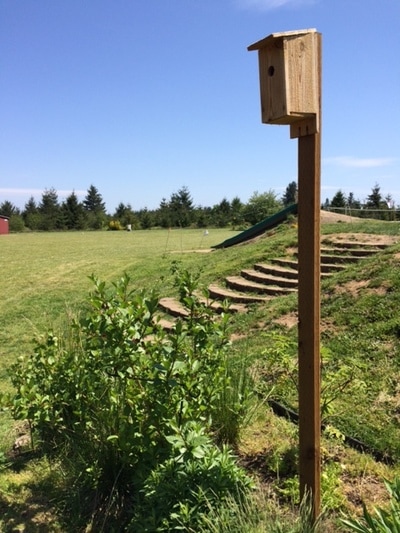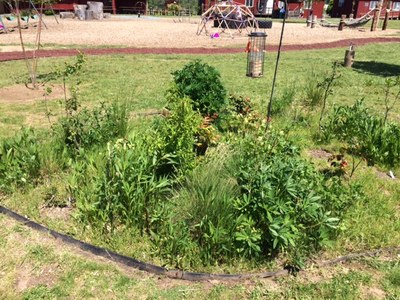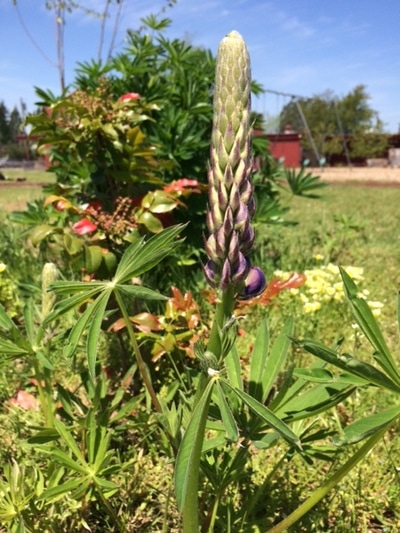Students Create Bird Habitat
The Bluebird Trail
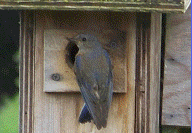
Starting in the winter of 2016, Springwater students will begin enhancing the schoolyard habitat by establishing nesting boxes for local Western Bluebirds, as well as watering and feeding features for native birds. With the help of the Clackamas County Soil & Water Conservation District, we will invest in providing quality habitat features throughout our Oak Savanna sites. An 8th grade student will be working on this as her Capstone project and every class will participate in promoting habitat for these special birds. You can learn more about Western Bluebird and the project below:
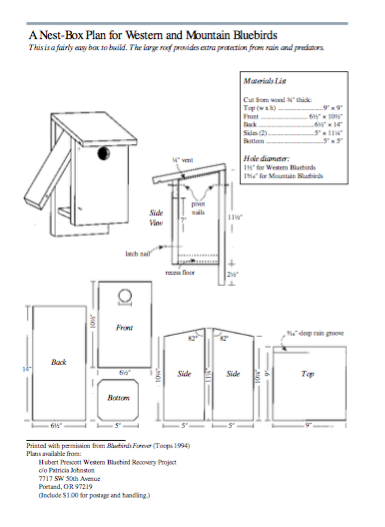
The Project Goals
1. Our first goal is to enhance our five oak savanna habitat gardens by acquiring watering features, bird feeders, nesting boxes, and valuable native plants to increase the habitat these “stepping stone” sites provide to Western Bluebirds and other local bird and insect species. By building habitat features specific to the Western Bluebird, our school would be providing essential habitat to a local, struggling bird species.
2. Our second goal is to begin a long-term, student-conducted experiment in “pest” management solutions for our own organic vegetable garden. As mostly insectivores, greater numbers of Western Bluebirds could potentially decrease the negative effect of insect pests. Our school can encourage a beneficial relationship with this bird species by having our middle school students plant more native, insect-encouraging plants, such as the Showy Milkweed, and fruit-bearing plants, such as Kinnickinnick. Not only will these plants encourage bird forage, but provide habitat for Monarch Butterflies and other insect and bird species.
Management
The management project will include student-led surveys on insect populations in our school garden, as well as surveys of Western Bluebird nesting activity in the new nesting boxes and habitat zones. During the spring trimester, various classes will conduct multiple observation and monitoring activities to count bird and insect species, collecting and presenting on the data they gather. At the end of the school year, they will build signage and present on the importance of Western Bluebird habitat and the features in the habitat sites. These surveys will be conducted every spring and ongoing. Springwater middle school students will compile the data every year and draw conclusions on the success of the program, or changes that need to be made.
In accomplishing this goal, our school would achieve greater biodiversity and garden health, increased habitat for a pressured species in our area—the Western Bluebird—and provide better quality learning opportunities for our students in their science unit studies on birds, migration, phenology, and more.
Gardening for the Birds
Gardening for birds is a key focus of this long-term project for Springwater. Our students have worked hard to nurture our school garden and to build the five native garden habitat zones across the playground. The students value the gardens as ecosystems and respect the diversity of plant, insect, and mammal species that travel through and live in the gardens. Our school has the foundations for thriving habitat opportunities, but lacks vital features and long-term success.
By focusing on more habitat features, especially for the Western Bluebird, we are benefiting bird and insect species as well as our own organic garden through possible “pest” management and increased biodiversity. Our staff and students understand that garden strength and sustainability lies in the diversity of the ecosystem around us. Increased birds and insects on our schoolyard would benefit our local fauna community, provide seasonal learning opportunities for our students, and illustrate to the larger community how to build habitat spaces for local birds.
1. Our first goal is to enhance our five oak savanna habitat gardens by acquiring watering features, bird feeders, nesting boxes, and valuable native plants to increase the habitat these “stepping stone” sites provide to Western Bluebirds and other local bird and insect species. By building habitat features specific to the Western Bluebird, our school would be providing essential habitat to a local, struggling bird species.
2. Our second goal is to begin a long-term, student-conducted experiment in “pest” management solutions for our own organic vegetable garden. As mostly insectivores, greater numbers of Western Bluebirds could potentially decrease the negative effect of insect pests. Our school can encourage a beneficial relationship with this bird species by having our middle school students plant more native, insect-encouraging plants, such as the Showy Milkweed, and fruit-bearing plants, such as Kinnickinnick. Not only will these plants encourage bird forage, but provide habitat for Monarch Butterflies and other insect and bird species.
Management
The management project will include student-led surveys on insect populations in our school garden, as well as surveys of Western Bluebird nesting activity in the new nesting boxes and habitat zones. During the spring trimester, various classes will conduct multiple observation and monitoring activities to count bird and insect species, collecting and presenting on the data they gather. At the end of the school year, they will build signage and present on the importance of Western Bluebird habitat and the features in the habitat sites. These surveys will be conducted every spring and ongoing. Springwater middle school students will compile the data every year and draw conclusions on the success of the program, or changes that need to be made.
In accomplishing this goal, our school would achieve greater biodiversity and garden health, increased habitat for a pressured species in our area—the Western Bluebird—and provide better quality learning opportunities for our students in their science unit studies on birds, migration, phenology, and more.
Gardening for the Birds
Gardening for birds is a key focus of this long-term project for Springwater. Our students have worked hard to nurture our school garden and to build the five native garden habitat zones across the playground. The students value the gardens as ecosystems and respect the diversity of plant, insect, and mammal species that travel through and live in the gardens. Our school has the foundations for thriving habitat opportunities, but lacks vital features and long-term success.
By focusing on more habitat features, especially for the Western Bluebird, we are benefiting bird and insect species as well as our own organic garden through possible “pest” management and increased biodiversity. Our staff and students understand that garden strength and sustainability lies in the diversity of the ecosystem around us. Increased birds and insects on our schoolyard would benefit our local fauna community, provide seasonal learning opportunities for our students, and illustrate to the larger community how to build habitat spaces for local birds.
The Oak Savanna Habitat Zones
In the fall of 2015, the Springwater Garden Program received a grant from Project Learning Tree to develop a native oaks savanna on the school grounds. With this opportunity, the 7th grade Foxes researched and designed this habitat, while teaching the other Springwater students how to take care of the space for years to come. The goal of this project is build habitat zones across the school yard that support the native oak savanna biome, while also offering a new living lab for students to nurture and increased plant diversity and habitat for local wildlife.
|
This is the best habitat building methods for our school considering how much grassland space we have punctuated with patches of shrubs and trees.
|
Habitat Connectivity
After conducting student research and assessing the needs of the school, the students decided to build the oak savanna spaces as habitat "stepping stones" across the school campus. There are five oak savanna spaces connecting from the the south-eastern edge of the school yard to the south-western edge. Some of the spaces interact with the Metro natural space on the south side of the property, while a few others lead towards the school garden and the other natural spaces at the heart of the school yard. With this design, we hope to encourage a greater diversity of insects, birds, and mammals to journey and nest onto our school yard. These "stepping stones" will also work well with how Springwater students use the property. Students will be able to see clear boundaries between the oaks savannas and the grassland, respecting the differences and importance of the habitat zones. Click here to learn more about habitat connectivity: _http://content.yardmap.org/learn/habitat-connectivity-2/
|
The 7th graders building the gardens:
